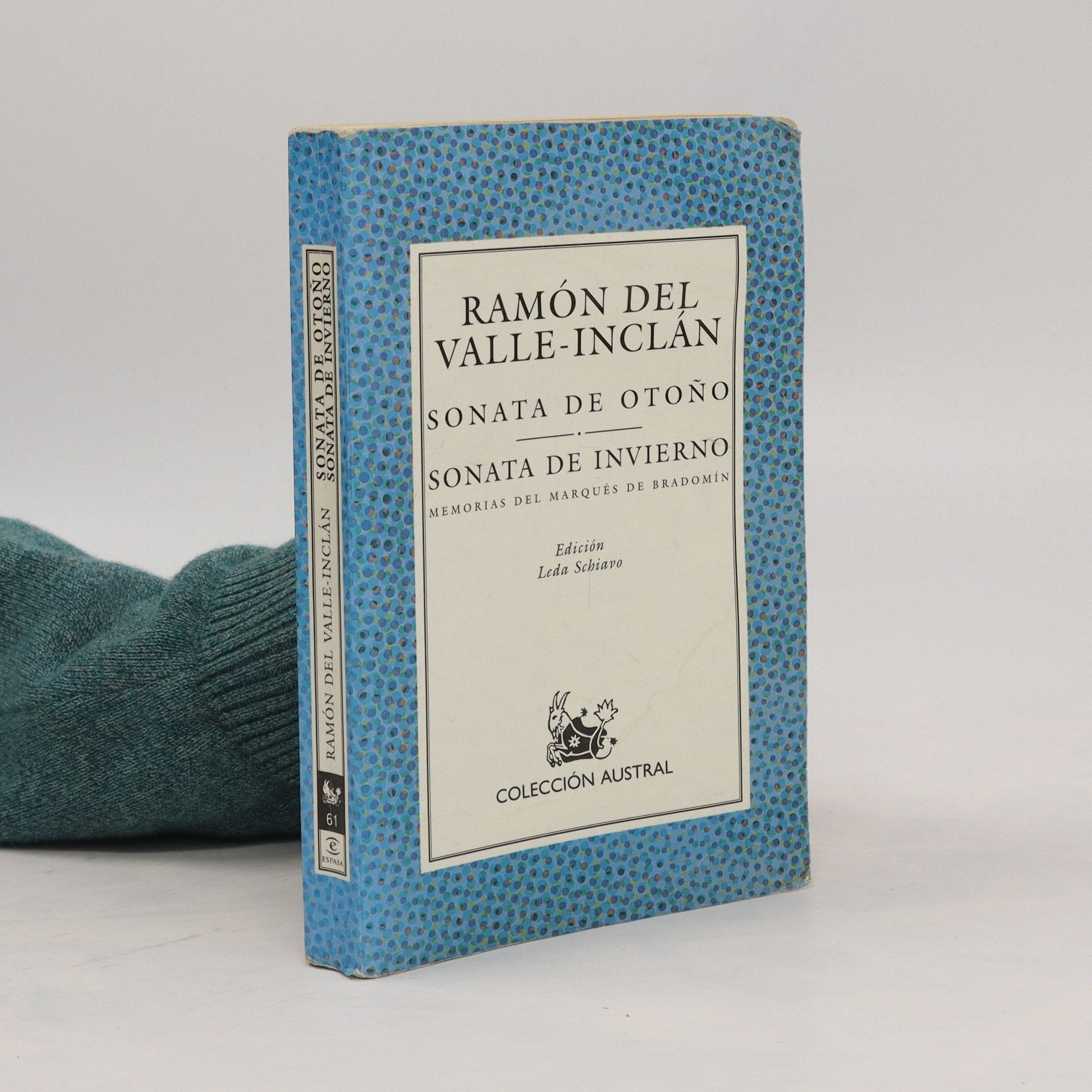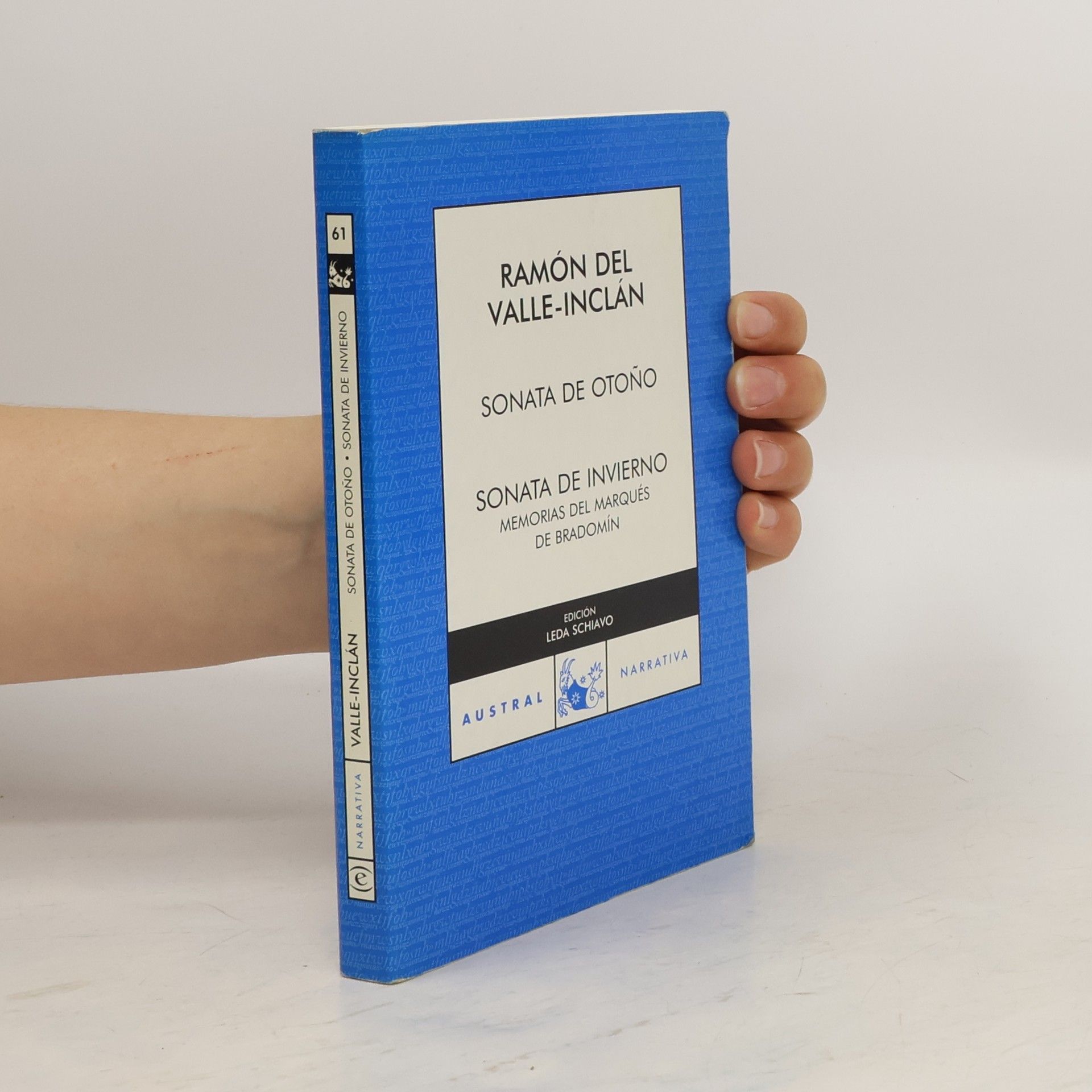Los cuentos de Valle-Inclán demuestran como el autor supo aprovechar como nadie los elementos de la Galicia mítica y ancestral para crear una narrativa fantástica y de terror.Ramón del Valle-Inclán, el genial autor de las Sonatas (1902), Divinas Palabras (1919), Luces de Bohemia (1920), Tirano Banderas (1926) y Martes de Carnaval (1930) comenzó su andadura literaria como escritor de narraciones breves, primero publicadas en periódicos y revistas y luego recogidas en libros. En esta selección de cuentos pertenecientes a la obra Jardín umbrío (1903), sus cuentos se adentran en el mundo gallego, misterioso, ancestral y mítico. Cuentos inquietantes plagados de escenas dramáticas y escalofriantes, exorcismos, conjuros y supersticiones, de ambientes tenebrosos y de oscuros presagios.
Ramón María del Valle-Inclán Book order
Ramón del Valle-Inclán masterfully explored the grotesque and tragicomic aspects of life, particularly through his literary style known as 'esperpento.' Described by the author as a search for 'the comic side of the tragedy of life,' this technique offers a stark and often unsettling perspective on reality. His body of work, spanning novels and plays, is lauded for its unique stylistic flair and profound insights into the human condition. Valle-Inclán left an indelible mark on Spanish literature, with his influence continuing to resonate.
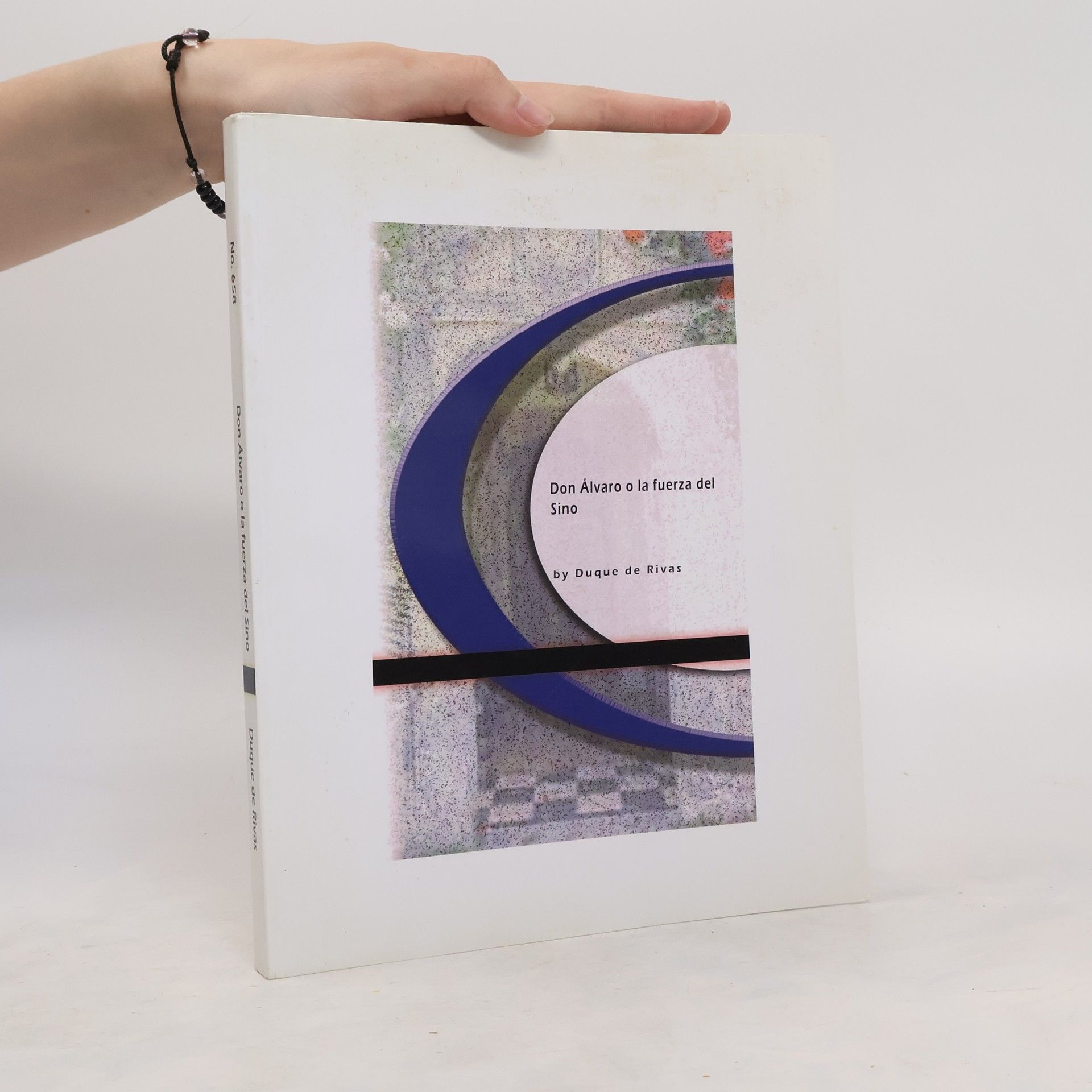


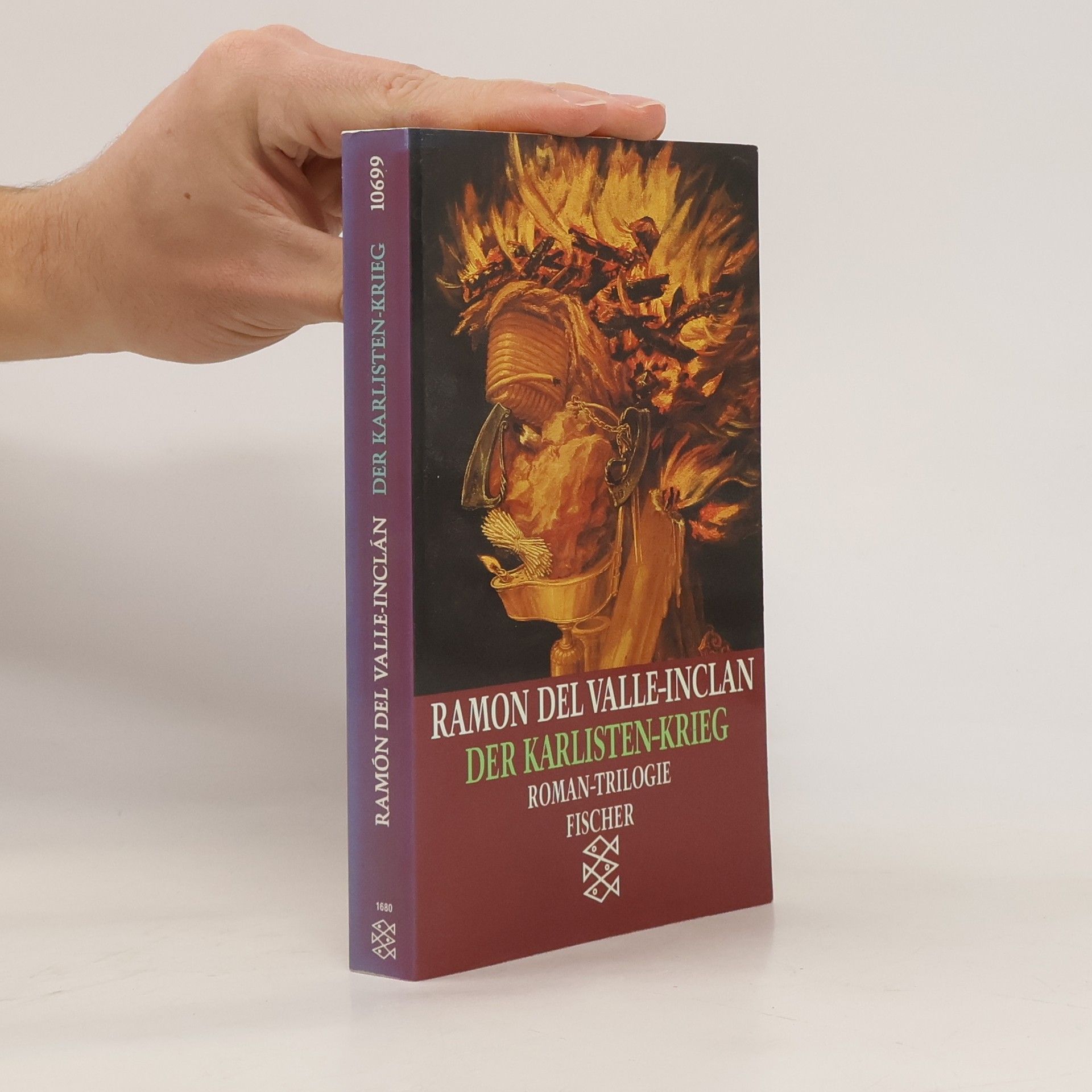

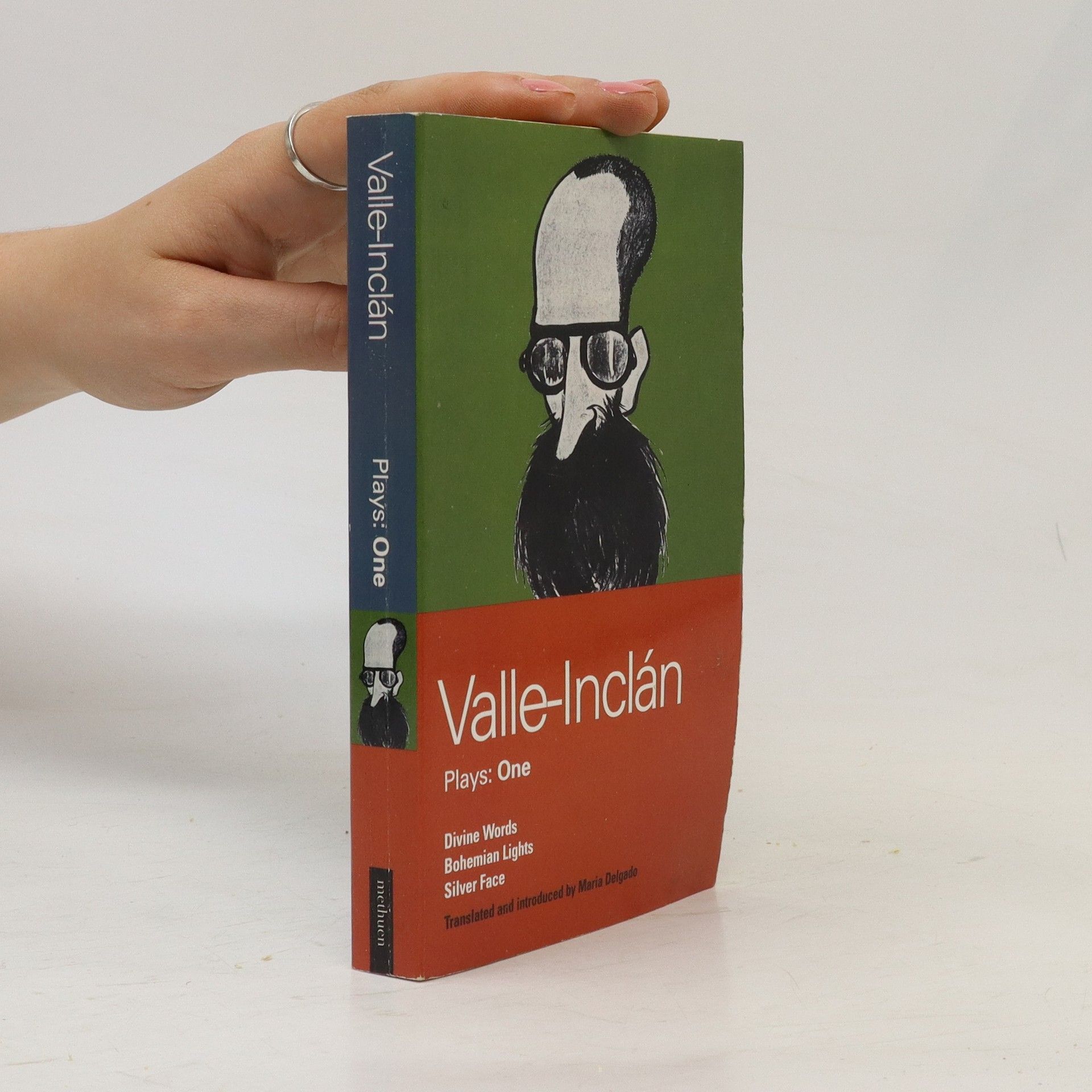
- 2024
- 2023
Die Wunderlampe
Spirituelle Übungen
Valle-Inclán, der große, mystisch inspirierte Dichter spanischer Zunge im 20. Jahrhundert, bekennt sich in der »Wunderlampe« zu einer zeitenthobenen Auffassung künstlerischen Schaffens, die er ästhetischen Quietismus nennt. Seine Themen und Motive entfalten sich dabei in einem funkelnden Kaleidoskop aus mythologischen Anspielungen, Elementen gnostischen Erlösungswissens, religions- und kunstgeschichtlichen Exempeln sowie, nicht zuletzt und an exponierten Stellen, in glühend farbig geschilderten Schlüsselerlebnissen aus dem eigenen Leben. Ich danke Ihnen für diese außergewöhnliche »Wunderlampe«, die ich mit Vergnügen immer wieder gelesen habe … Ich bin sehr einverstanden mit Ihrer Poetik, die Sie in »Das musikalische Wunder« auf großartige Weise darlegen. (Antonio Machado an Valle-Inclán)
- 2022
Frühlingssonate
Memoiren des Marqués de Bradomín
Als junger Mann wird Marqués de Bradomín auf Weisung des Papstes an den florentinischen Hof Liguras entsandt. Der Herr der Stadt soll aus seinen Händen den Kardinalshut empfangen. Doch der Empfänger liegt im Sterben, und als Marqués de Bradomín die älteste der fünf bildhübschen Töchter der Fürstin erblickt, ändern sich seine Pläne. Die Verführung María Rosarios, längst dem Kloster versprochen, nimmt seinen Lauf. Doch sein Geschick, sein Wille, das Spiel mit Schuld und Imagination kostet ein Opfer, das nicht wiedergutzumachen ist. Vier den Jahreszeiten gewidmete Kurzromane schrieb Ramón del Valle-Inclán zu Beginn des 20. Jahrhundert als zentrale Figur des Modernismo, Frühlingssonate der bekannteste. In melancholischer, die feinste Schwingung, Regung, Alteration vermittelnder Sprache verwandelt er den Don-Juan-Mythos in einen Urtext der der spanischen Moderne.
- 2008
Luces de Bohemia
- 295 pages
- 11 hours of reading
Ramón María del Valle-Inclán (Villanueva de Arosa, Pontevedra, 1866-Santiago de Compostela, 1936), presidente del Ateneo de Madrid y director de la Academia de Bellas Artes de Roma, fue una de las personalidades más interesantes de la generación del 98. Gran poeta, forjador del idioma, creador del esperpento y autor de novelas históricas, Valle-Inclán hizo el mejor teatro de su tiempo. COLECCIÓN AUSTRAL presenta en este volumen LUCES DE BOHEMIA, esperpento trágico de la vida literaria de la época. Al degradarse la realidad aparece la farsa y, en un segundo nivel, el esperpento; «Los héroes clásicos reflejados en los espejos cóncavos dan el Esperpento», aclara Valle-Inclán. Aquí el espejo cóncavo es una conciencia dolorida, una conciencia moral que escandaliza o aterra. Resulta patético que quien vea la verdad sea un ciego, Max Estrella, soñador perdido en un Madrid absurdo y hambriento. La magnífica Introducción de Alonso Zamora Vicente, de la Real Academia Española, y la ilustrativa Guía de lectura y Glosario preparados por Joaquín del Valle-Inclán nos descubren el universo mágico del genial escritor, el entramado de relaciones entre la realidad y el texto y la visión voluntariamente deformadora y crítica que se oculta bajo la caricatura; un completo y sugerente análisis de las claves de la creación valleinclaniana.
- 2007
La cabeza del dragón
- 96 pages
- 4 hours of reading
El humor de la farsa anima a los personajes de esta obra teatral. Tras la apariencia de un cuento de hadas, una bella infantina a punto de ser devorada por un dragón y un valiente príncipe que será su salvador, se esconden muchas referencias históricas de la época de Valle-Inclán, un autor genial y una de las personalidades más interesantes de la Generación del 98.
- 2005
Valle-Inclán escribió, en 1920, esta obra, con la que quedó inaugurada una nueva manera de ver la realidad: el esperpento. Personajes exagerados y situaciones grotescas se suceden a lo largo de los dos días en los que el poeta ciego Max Estrella, junto con su amigo Latino y el resto de personajes nocturnos, pululan por el Madrid más sórdido.Ramón del Valle-Inclán es considerado el gran maestro de las palabras, autor de obras tan conocidas y paradigmáticas como Las Sonatas, Divinas palabras o Voces de gesta.Con motivo de la edición número 50 de esta obra en Austral y del aniversario de la muerte de su autor, Espasa lo celebra con el lanzamiento de esta edición especial que incluye un cuadernillo de ilustraciones y un prólogo de Joaquín del Valle-Inclán.
- 2001
Una novela modernista en la que el Marqués de Bradomín, un donjuán cínico y sensual, nos narra sus amores. Se sirve para ello de un marco melancólico y nostálgico como es el otoño, alegoría de su estado de ánimo y su edad. Sitúa al lector en una Galicia aristocrática y supersticiosa, testigo de los últimos vestigios del feudalismo. Toda la obra gira en torno al amor retórico que mantiene el Marqués con Concha; frágil de voluntad y de salud. Bradomín disfruta amando a una mujer "fantasmagórica", comportamiento cargado de perversión y lujuria, del que hace gala en cada uno de sus movimientos. Una obra atrevida para su tiempo, por la temática, y envuelta de un gran refinamiento estético.
- 2000
Don Álvaro o la fuerza del Sino
- 228 pages
- 8 hours of reading
Ángel de Saavedra, Duque de Rivas (1791-1865) tuvo una vida turbulenta, apasionada, romántica y contradictoria como la época en que le tocó vivir. Luchó en la guerra de la Independencia y tras ésta se exilió por sus ideas liberales en 1823. Vivió en Londres, Italia y Malta, y en ese momento se apasionó por los autores ingleses de más prestigio entre los románticos (Shakespeare, Byron, Scott). Gracias a una amnistía, regresó a España en 1834 y heredó el título y una gran fortuna, iniciando una evolución hacia posturas más conservadoras. En 1835 estrena Don Álvaro o la fuerza del sino, primer drama español íntegramente romántico y acaso el más representativo del movimiento, pues en ningún otro se acumulan tantos elementos característicos: pasión, misterio, soledad, fuerza ciega de la fatalidad, rebelión, suicidio... Ningún otro consigue fundir tan genialmente estilo culto y llano, verso y prosa, en una acción de desbordada y enloquecida originalidad. La edición de Carlos Ruiz Silva y el apéndice de Juan Francisco Peña, facilitan los datos para que el lector pueda comprender la obra en su propio contexto.
- 1999
Romance de lobos
- 168 pages
- 6 hours of reading
Romance de lobos, la más conseguida de las Comedias Bárbaras, continúa los tres hilos argumentales iniciados en las obras anteriores, concentrados aquí en uno sólo: la transformación de Don Juan Manuel Montenegro, que pasa del exceso y la locura de su violento vivir a una nueva conciencia de sí mismo, redimido por un sentimiento de culpa que apaga su soberbia. Ya la primera escena, con la aparición fantasmal de la Santa Compaña, que pasa como una niebla sobre los maizales, preludia la caída de Montenegro, el carácter ceremonial y el contenido trágico de la Comedia. Valle-Inclán se nutre de imágenes sonoras y visuales para potenciar el sentimiento de soledad, angustia y muerte que inunda la obra. El viento, la lluvia, la noche, la luz eléctrica del rayo, el mar y un completo bestiario de simbología animal envuelven al lector en una atmósfera cuya sacralidad nos proyecta hacia la eterna incognita del destino humano.
- 1999
Sonata de otono
Sonata de invierno



